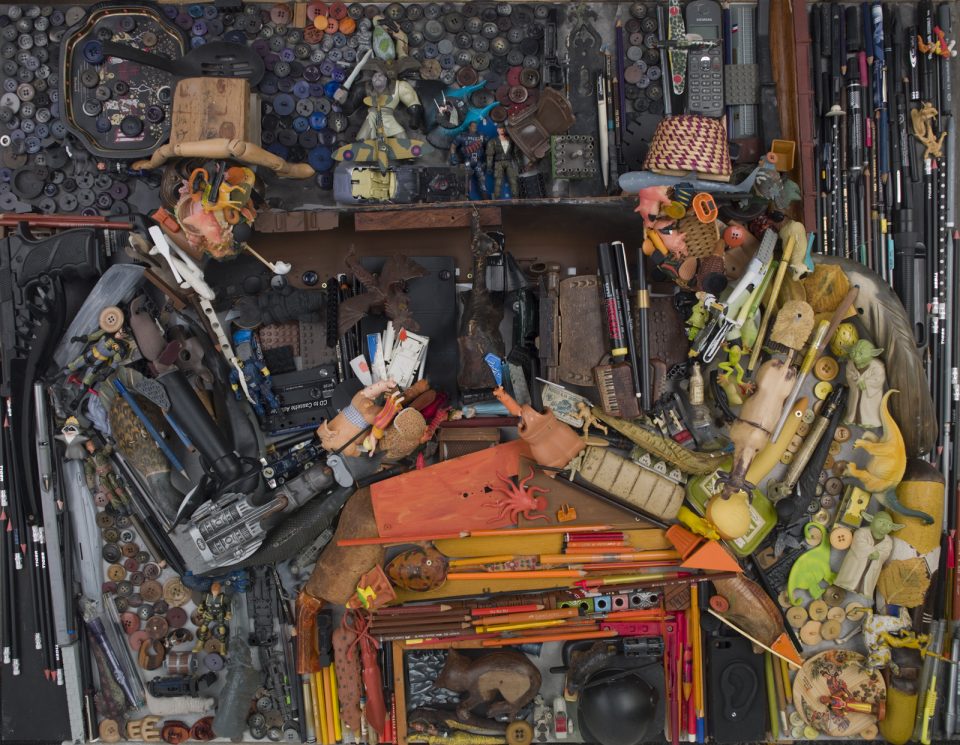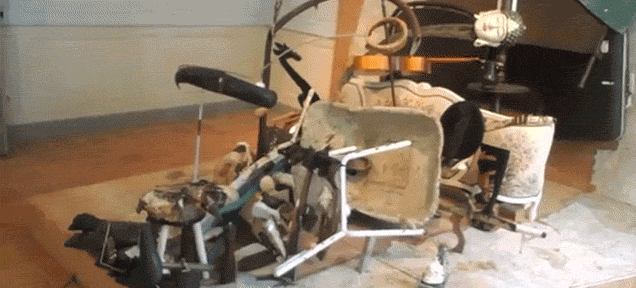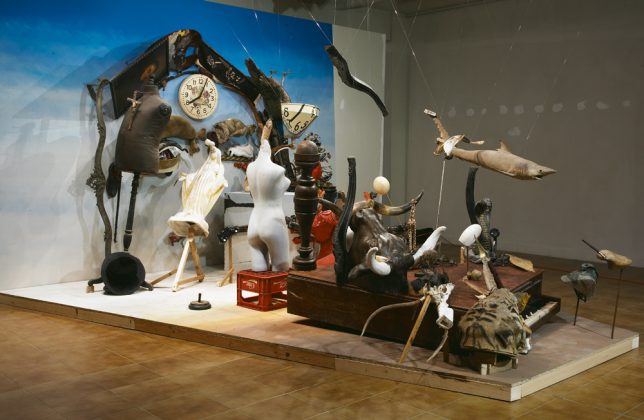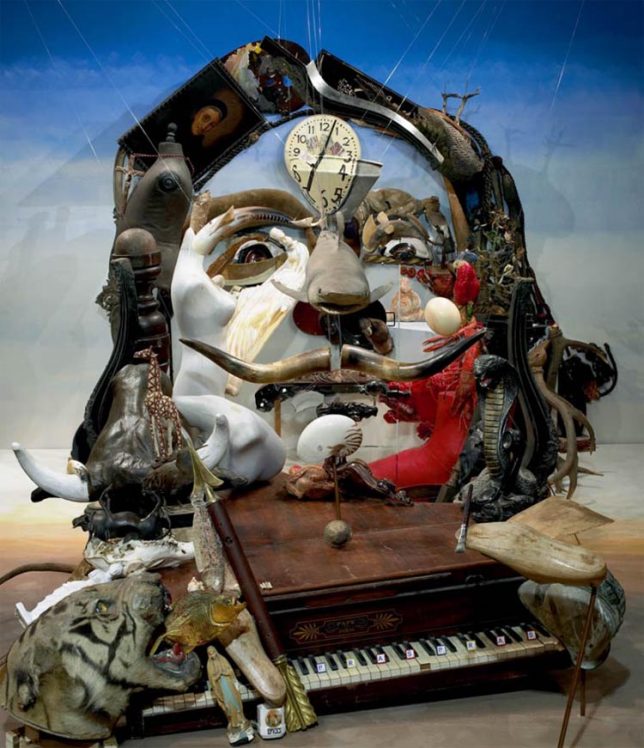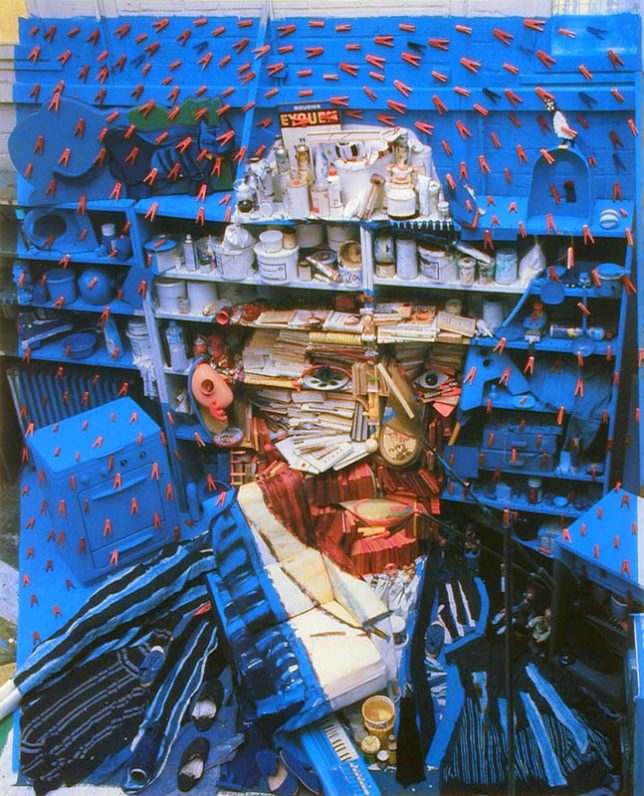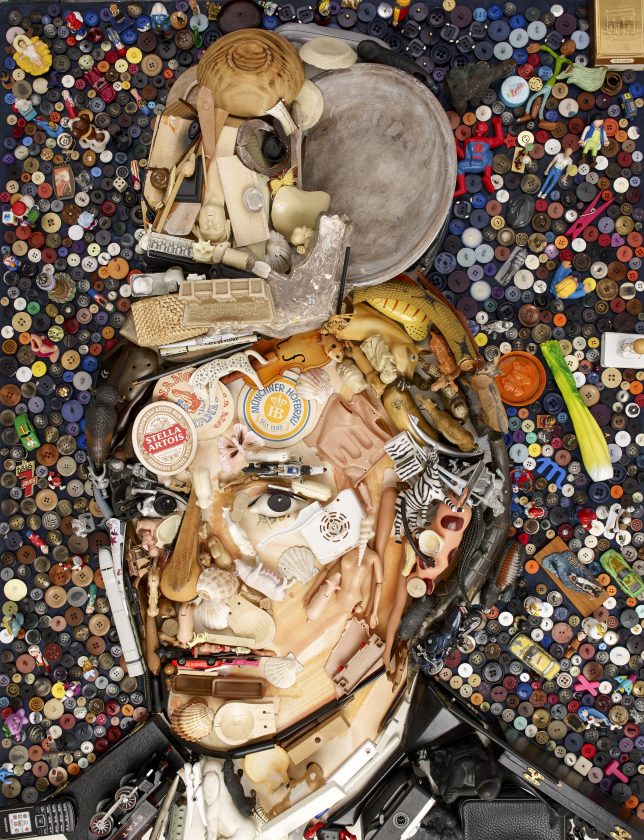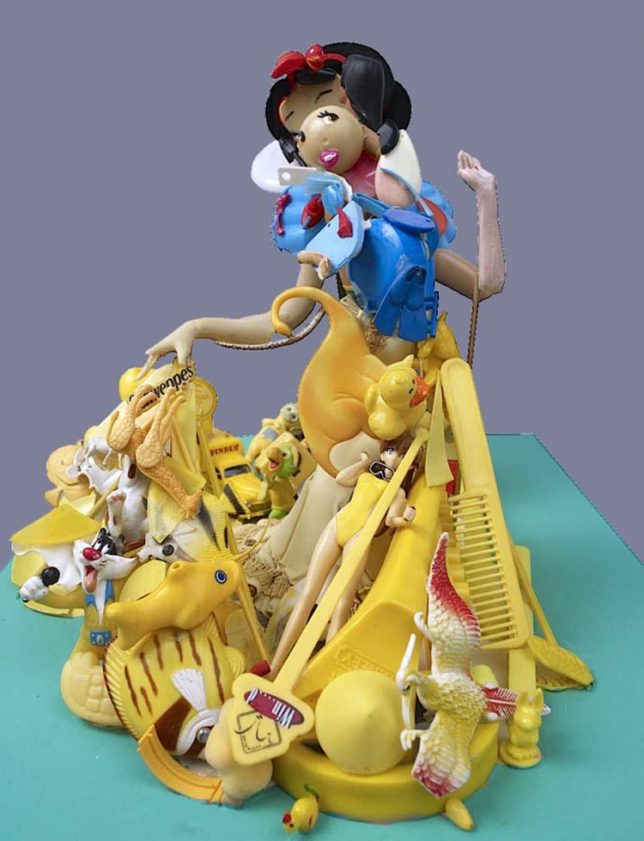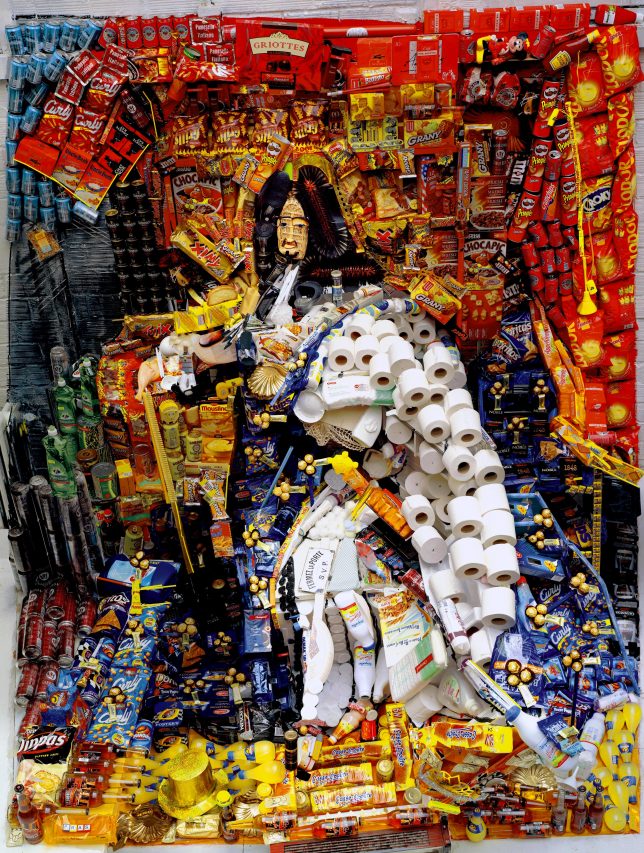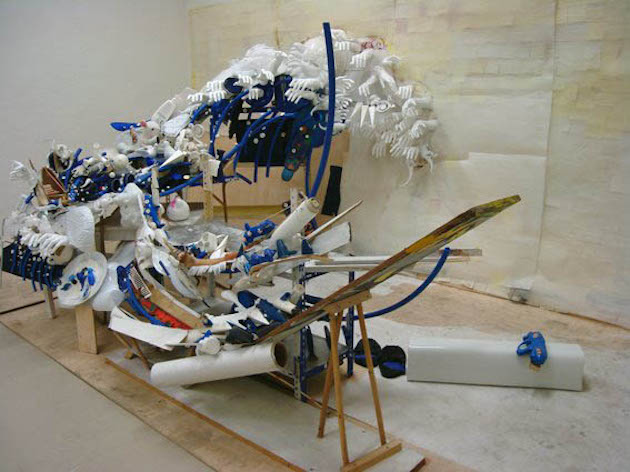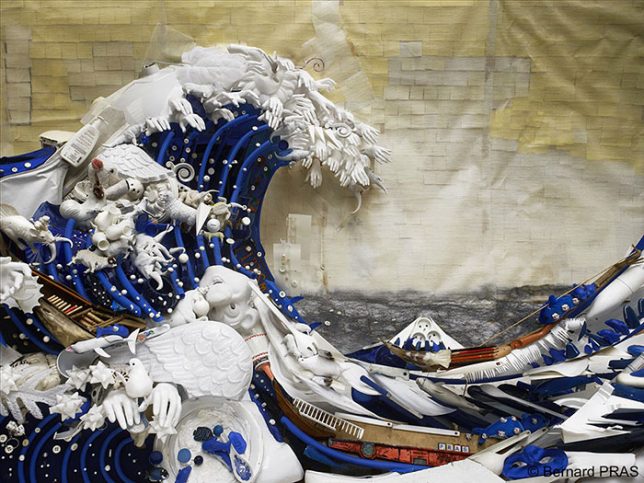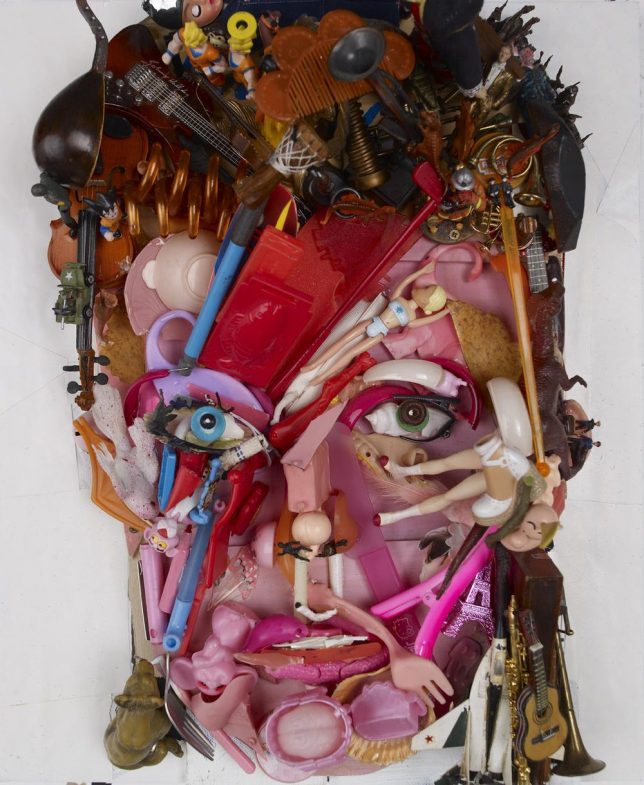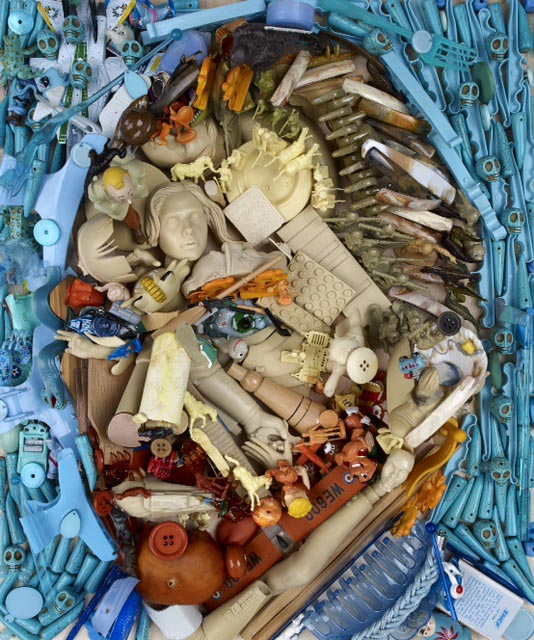It takes a special kind of creative brain to sort a pile of random junk into an anamorphic arrangement that looks like complete chaos from most angles, but comes together into a work of art from the right perspective. These compositions are like visual puzzles, requiring the artist to select objects of just the right size, shape and color and place them very precisely within a three-dimensional space to get the right result. French artist Bernard Pras has mastered this unusual medium, creating found object installations that morph from messes to masterpieces.
A painter, sculptor and photographer, Pras has spent twenty years refining his methods. He starts each project with a sketch, and then builds the outline in three dimensional space. His ability to intuitively choose which objects to place in the frame comes from all those years of practice, he says, making it almost subconscious.
“I consider that my painting work became the current form of my work,” he says in an interview with Age of Artists. “I see it as a logical development of what I was doing in painting. It is an evolution and not a change. It was a reflection and a process that brought me to it naturally. Around thirty years old, I had an insight of what I wanted to do in regard of what I was painting. I realized that what I was interested in was nearly what I was doing between two paintings. This empty space, this kind of area… This mysterious link that ties together different paintings I painted consecutively. So I looked for a way to express that in a single element. It took me around twenty years to succeed roughly in what I was looking for.”
Pras’ most recent work includes portraits of pop culture icons like Andy Warhol, Bob Marley, Salvador Dali, Vincent Van Gogh, Albert Einstein and many more.
You could easily spend hours gazing at each work, identifying all the little bits and pieces that make up a portrait subject’s facial features, hair, body and clothing – and they’re often tailored to the subject’s identity. For example, a portrait of David Bowie heavily features miniature musical instruments. These installations would be really fun to see in person.
